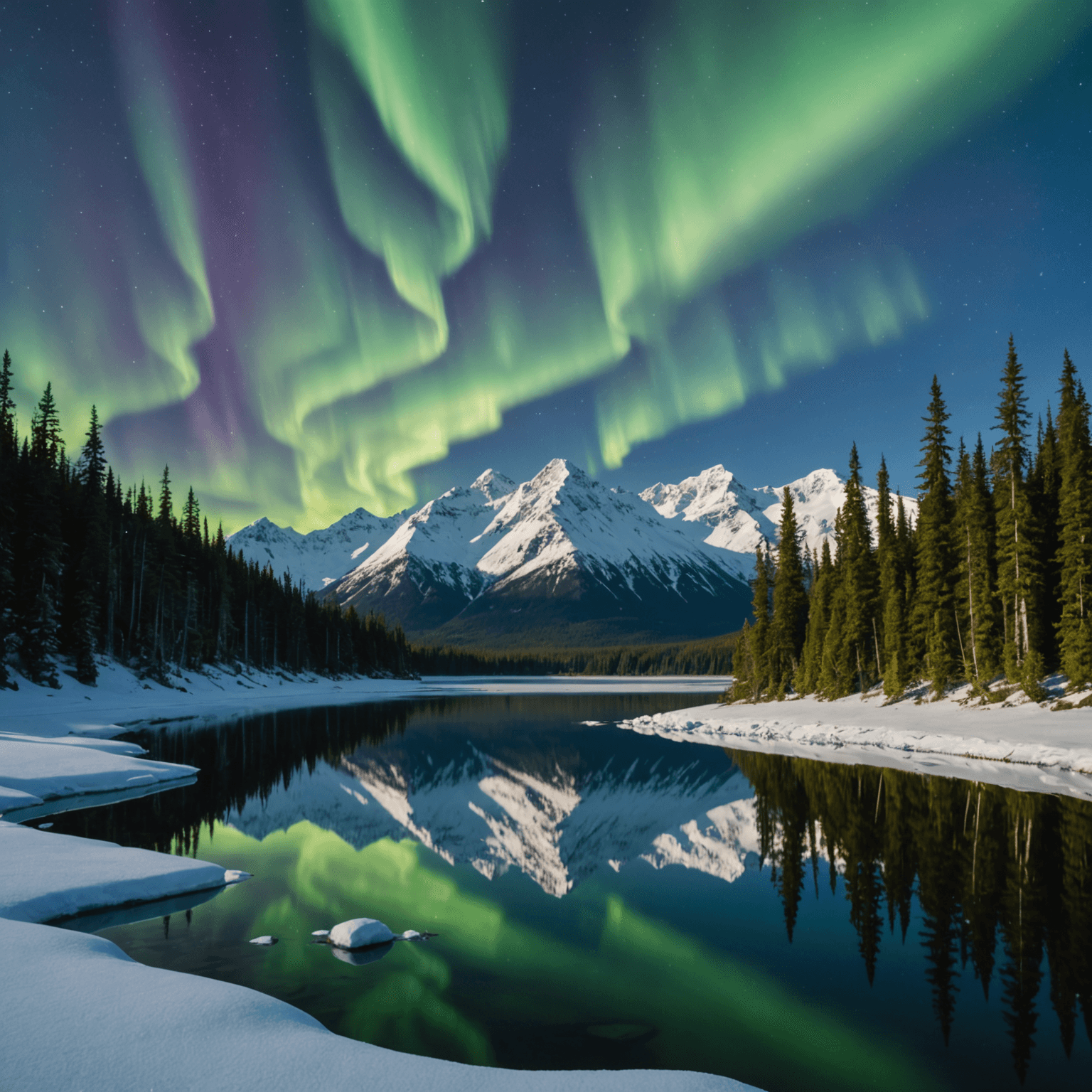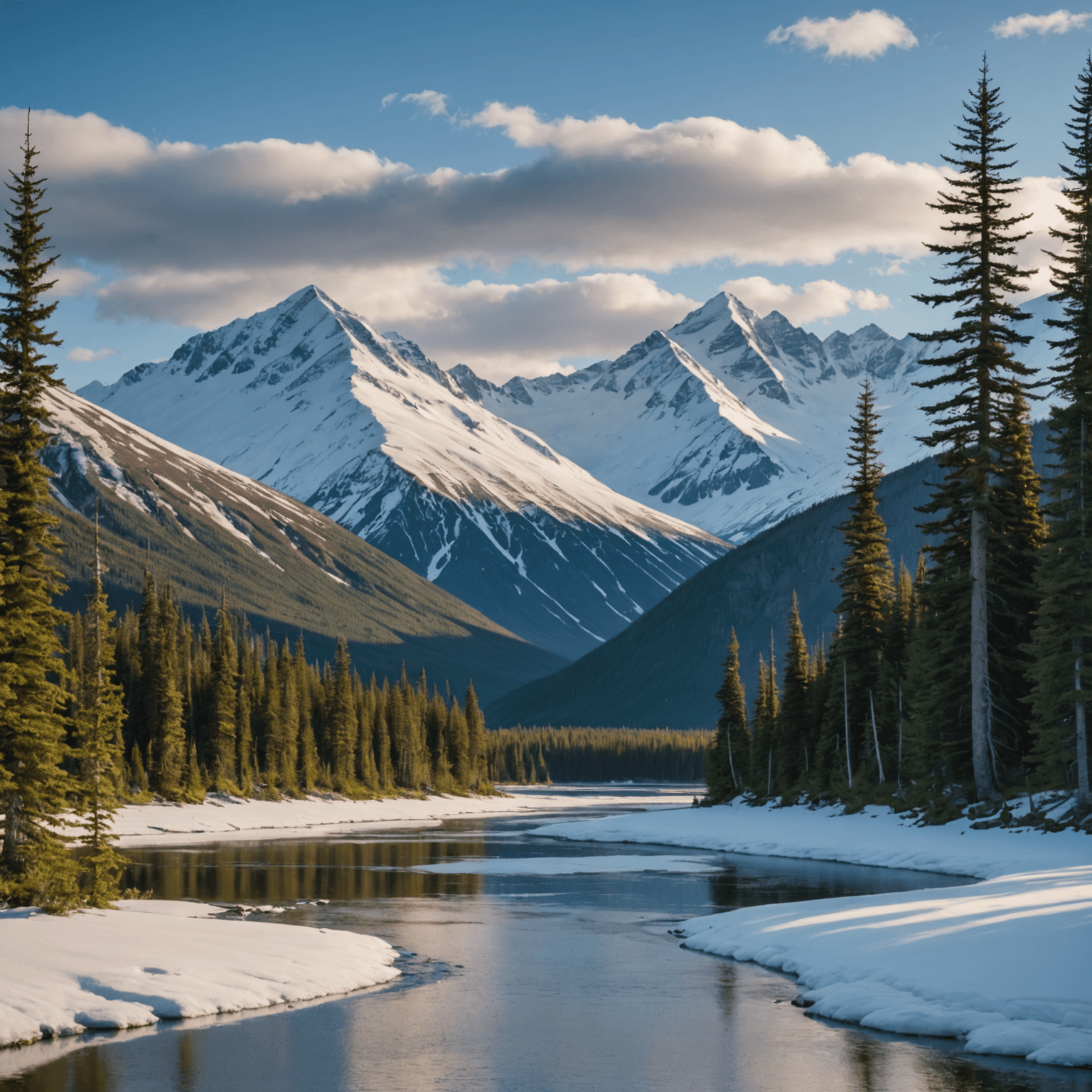Introduction
Alaska, with its stunning landscapes and breathtaking natural phenomena, is a bucket-list destination for many travelers. Among its many wonders, the Aurora Borealis, or Northern Lights, is perhaps the most mesmerizing. Planning an Alaska Northern Lights tour requires careful preparation to maximize your chances of witnessing this celestial spectacle. This guide will provide you with essential tips on when to go, what to pack, and what to expect during your journey to see the Northern Lights in Alaska.
Best Time to See the Northern Lights in Alaska
The Northern Lights are best viewed from late August to April, with peak visibility occurring during the long, dark winter months of December through March. During this time, the nights are longest, providing ample opportunity to catch the lights. However, keep in mind that weather conditions and solar activity also play crucial roles in determining visibility. For up-to-date aurora forecasts, websites like the Geophysical Institute’s Aurora Forecast can be a valuable tool in planning your trip.
Choosing the Right Location
Alaska is blessed with numerous spots ideal for viewing the Northern Lights. Fairbanks is often touted as one of the best places for aurora viewing due to its clear skies and proximity to the Arctic Circle. Denali National Park and Preserve, located just a few hours’ drive from Fairbanks, offers stunning natural backdrops for the lights. To explore more about what Denali has to offer, visit Discover Denali.
For those seeking a more remote experience, the small town of Talkeetna serves as a gateway to the Alaskan wilderness. Learn more about Talkeetna’s unique charm on the Talkeetna Chamber of Commerce website.

What to Wear and Pack
Alaska’s winter conditions can be harsh, so dressing appropriately is crucial. Layering is key: start with a moisture-wicking base layer, followed by an insulating layer, and finish with a waterproof and windproof outer layer. Essential accessories include a warm hat, gloves, and thermal socks. Don’t forget to pack a quality camera with a tripod to capture the lights, as well as a headlamp with a red light setting to preserve your night vision.
For those interested in combining their Northern Lights tour with other winter activities, consider a dog sledding and snowmobile combo tour for an unforgettable Alaskan adventure.
What to Expect on Your Tour
While the Northern Lights are a natural phenomenon and can be unpredictable, guided tours increase your odds of a successful viewing. Experienced guides know the best spots and times for optimal aurora activity. Most tours include transportation, warm beverages, and expert photography tips. Some even offer overnight stays in remote lodges for those looking to escape the city lights completely. Check out Snowhook Lodge for an authentic Alaskan experience.

Other Activities to Enjoy
While the Northern Lights are undoubtedly the highlight, Alaska offers a plethora of winter activities. Consider a dog sledding adventure or an ice fishing combo to round out your trip. For those interested in aerial views of Alaska’s snowy landscapes, a Hatcher Pass Helicopter Tour offers a unique perspective.
Conclusion
Planning an Alaska Northern Lights tour can be the adventure of a lifetime. By choosing the right time, location, and tour, and by preparing appropriately for the weather, you can maximize your chances of witnessing this awe-inspiring natural wonder. Whether you choose to explore the wilderness of Denali, experience the charm of Talkeetna, or embark on a dog sledding adventure, Alaska offers an unforgettable setting for the Northern Lights.
FAQ
1. What is the best month to see the Northern Lights in Alaska?
The best months to see the Northern Lights in Alaska are typically from December to March, when the nights are longest and skies are darkest.
2. Can I see the Northern Lights from Anchorage?
While it is possible to see the Northern Lights from Anchorage, the city lights can reduce visibility. For a better experience, travel to areas with less light pollution like Fairbanks or Denali National Park.
3. Do I need special equipment to photograph the Northern Lights?
A good camera with manual settings and a tripod is recommended to capture the Northern Lights. A wide-angle lens and a cable release or remote shutter can also enhance your photography.
4. Are Northern Lights tours available year-round?
Northern Lights tours are typically available from late August to April, aligning with the aurora viewing season in Alaska.
5. What other activities can I do while on a Northern Lights tour?
There are numerous activities to enjoy, such as dog sledding, snowmobiling, ice fishing, and helicopter tours. Check out Snowhook Adventures for more options.
6. How can I check the Aurora forecast before my trip?
You can check the aurora forecast on websites like the Geophysical Institute’s Aurora Forecast or the NOAA’s Space Weather Prediction Center.
7. Is it safe to travel to remote areas in Alaska for aurora viewing?
Yes, it is generally safe, but it’s important to be prepared for cold weather and to have a reliable means of communication. Joining guided tours can enhance safety and provide local expertise.
8. What should I know about Alaskan weather when planning my tour?
Alaska’s winter weather can be extreme with temperatures often below freezing. Check the National Weather Service for current conditions and prepare accordingly.




